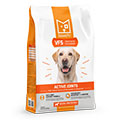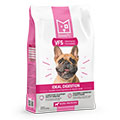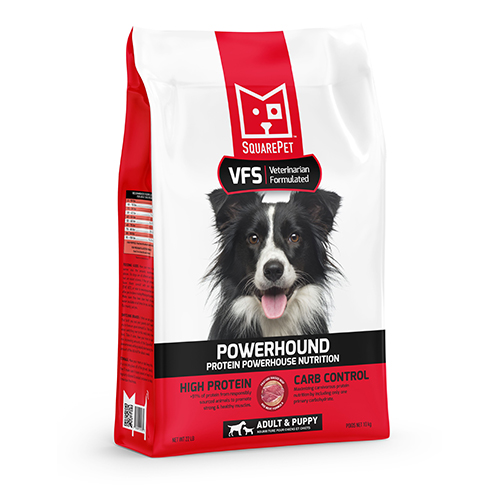Anyone whose had a dog diagnosed with pancreatitis has likely been recommended a low fat veterinary diet – why is this? To start let’s define what a normal pancreas is and what it does for the body.
The pancreas is a relatively small organ that is situated in close proximity to the stomach and the upper intestines. It’s main job is to make digestive enzymes that break down protein, fat, and carbohydrates into smaller and more absorbable components. It also produces insulin to help maintain blood sugar. As simple as it sounds the pancreas is actually a very complex organ. Timing the release of the various enzymes it produces depends on inputs from all over the body including the brain, stomach, intestines as well as the type of nutrients being consumed.
What is pancreatitis?
Pancreatitis is defined as inflammation of the pancreas and is typically divided into one of two categories–acute or chronic. Acute pancrea titis tends to come on quickly with more severe clinical signs (vomiting, diarrhea, pain, lethargy, fever) whereas chronic pancreatitis has a more gradual or intermittent onset with milder or less severe clinical signs. The inflammation is caused by the digestive enzymes the pancreas produces being activated before they get to the stomach or intestines therefore causing irritation to the pancreas itself. Sometimes immediate medical care with hospitalization is needed for dogs experiencing acute pancreatit is. Chronic pancreatitis is very often managed at home.
Dietary management of pancreatitis
The best food for dogs with pancreatitis is one that is highly digestible, low in fat and palatable. Why low in fat? If we go back to what stimulates the pancreas to secrete those digestive enzymes what we find is that fat is one of the most potent stimulators of enzyme release. Limiting the amount of fat in a diet can help to decrease the amount of pancreatic stimulation and hopefully prevent reoccurrence.
There are a lot of low fat dog food brands for pancreatitis to choose from – here are some additional features to look for in a pancreatitis dog food:
- Antioxidants: Antioxidants from sources like Vitamin C and Vitamin E have been shown to be effective in reducing intestinal damage as a result of reducing oxidative stress.
- Anti-Inflammatory Omega 3 Fatty Acids DHA & EPA: Diets that have been enriched with these crucial nutrients can impact and lessen inflammation.
- Nutrients to promote intestinal and colonic health: Quality dietary fiber sources in moderation as well as quality prebiotics and probiotics can support a healthy gut microbiome.
<
Prescription or Non Prescription Low Fat Dog Food
There are many choices to choose from when selecting a low fat diet for dogs with pancreatitis. There are prescription low fat diets and other non-prescription low fat dog food options becoming available. A key feature to look for with any low fat formula is to check the label to make sure that there are guarantees for the maximum amount of fat a diet contains. Most commonly available low fat pet foods only list a minimum amount of fat which may permit the actual fat content within the diet to rise above levels that can be beneficial to support dogs with pancreatitis. A typical rule of thumb is to look for a low fat diet that contains no more than 7-8% fat on a dry matter basis. A veterinarian can help make the best choice based on the specific needs of an individual dog.


















